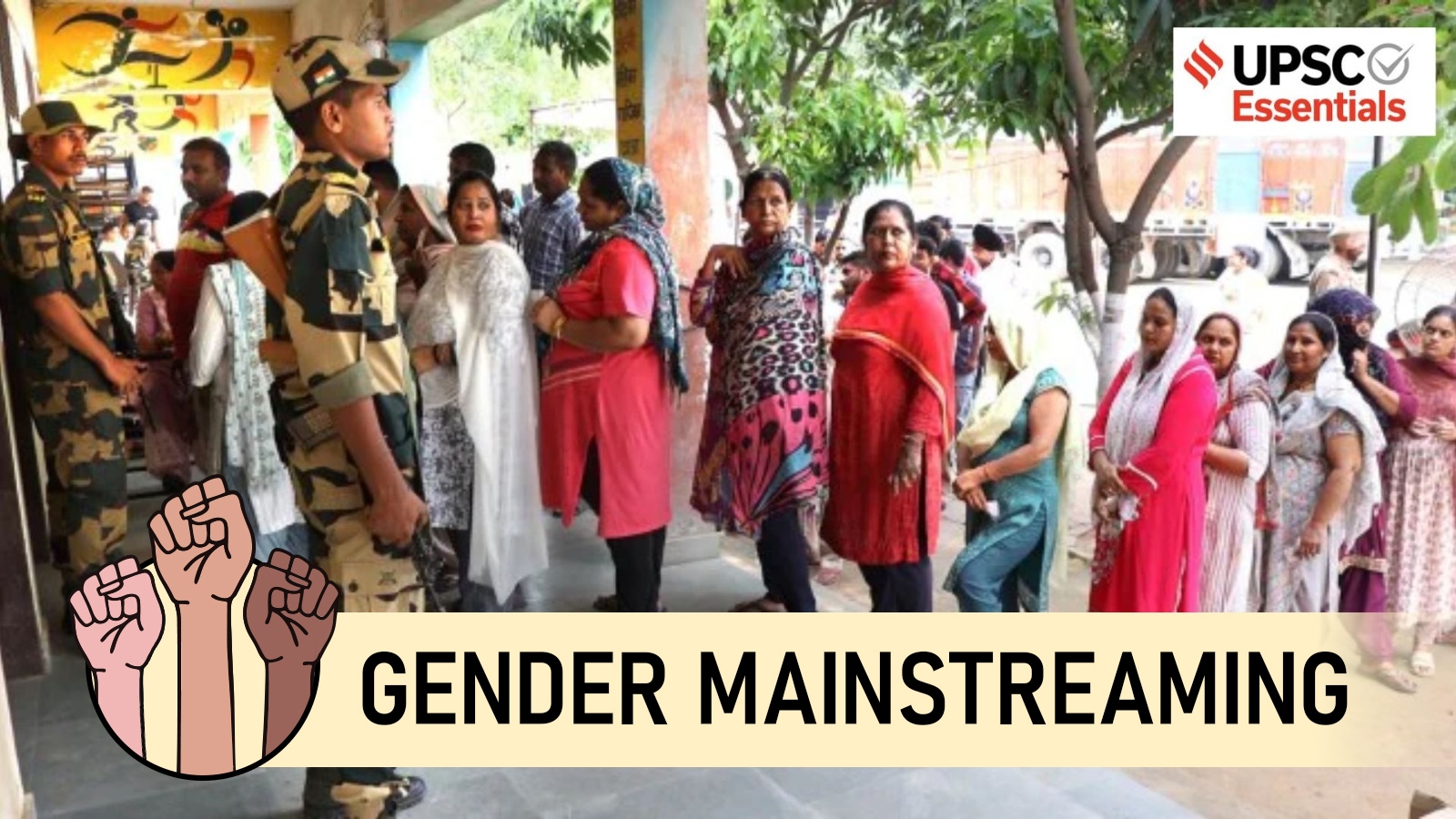How gender responsive budgeting can go beyond budgetary allocations – The Indian Express

Report on Gender-Responsive Budgeting in India and its Alignment with Sustainable Development Goals
Introduction: Fiscal Policy as a Tool for Gender Equality
Recent fiscal initiatives in Indian states, such as Bihar’s Mukhyamantri Mahila Rozgar Yojana and Kerala’s Women Safety Project, underscore a growing trend of leveraging public expenditure for women’s welfare and economic empowerment. These actions are practical applications of gender-responsive budgeting, a critical policy tool for addressing systemic inequalities. This report analyzes the framework of gender budgeting in India, its implementation, and its challenges, with a significant focus on its role in achieving the United Nations’ Sustainable Development Goals (SDGs), particularly SDG 5 (Gender Equality).
Gender Budgeting and the Sustainable Development Goals (SDGs)
Defining Gender-Responsive Budgeting
Gender budgeting is a strategic approach to fiscal policy that analyzes public resource allocation and expenditure from a gender perspective. It serves as a vital instrument for enhancing social justice and government accountability, thereby aligning national budgets with international commitments to the SDGs. The core objectives include:
- Promoting Gender Equality (SDG 5): By ensuring that public funds are used to close gender gaps in health, education, economic opportunity, and political participation.
- Reducing Inequalities (SDG 10): By recognizing and addressing the diverse, intersectional needs of women and other marginalized genders.
- Strengthening Institutions (SDG 16): By promoting transparency and accountability in how public resources are utilized to advance gender equity.
The global adoption of this practice, now in over 100 countries, was significantly influenced by the United Nations, particularly UN Women, and the Millennium Development Goals (MDGs), which established gender equality as a central component of development policy.
Implementation of Gender Budgeting in India
Historical Context and Institutional Framework
India’s journey with gender budgeting is framed by the National Policy for Empowerment of Women (2001). The first formal gender budget was introduced in the 2005-06 Union Budget following advocacy from feminist economists and civil society groups. A robust institutional framework has since been established to support this initiative at all levels of governance.
- Central Nodal Agency: The Ministry of Women and Child Development (MWCD) leads the implementation of gender budgeting.
- Fiscal Coordination: The Ministry of Finance mandates all ministries to establish Gender Budgeting Cells (GBCs) and issues an annual circular for the preparation of a Gender Budget Statement (GBS).
- Accountability Mechanism: The Comptroller and Auditor General of India (CAG) conducts performance audits to assess whether budgetary allocations have achieved their intended outcomes, reinforcing the principles of SDG 16.
The Gender Budget Statement (GBS)
The GBS is a key reporting tool that categorizes expenditure based on its impact on women, providing a clear measure of the government’s financial commitment to SDG 5.
- Part A: Comprises schemes with 100% allocation for women, such as maternity benefits and the construction of women’s hostels. These directly support targets under SDG 1 (No Poverty) and SDG 3 (Good Health and Well-being).
- Part B: Includes schemes where at least 30% of funds are allocated for women, such as programs for rural employment (SDG 8), health, and sanitation (SDG 6).
In the 2025-26 Union Budget, the gender budget allocation reached 8.8% of the total, a significant increase demonstrating a strengthened commitment. Central schemes like Beti Bachao, Beti Padhao and Ujjwala Yojana are prominent examples of policies aimed at enhancing women’s access to resources and bridging gender gaps, contributing to SDG 4 (Quality Education) and SDG 7 (Affordable and Clean Energy).
State-Level Analysis: Progress and Disparities
Case Studies: Odisha and Kerala
Several states have made significant advances in institutionalizing gender budgeting, creating models for effective implementation.
- Odisha: As the first state to adopt gender budgeting in 2004, Odisha allocates at least 30% of its plan funds to women-centric initiatives. Its State Policy for Women and Girls (2014) employs a life-cycle approach, addressing the needs of females from infancy to old age across health, education, and livelihood, holistically contributing to multiple SDGs.
- Kerala: Adopting the practice in 2008, Kerala devolved a significant portion of funds to Local Self Government Institutions (LSGIs), empowering local bodies to address gender issues. The state has also focused on creating gender-friendly public infrastructure, an initiative that aligns with SDG 11 (Sustainable Cities and Communities).
Regional Imbalances
Despite these successes, progress is uneven. States such as Uttar Pradesh, Bihar, and Rajasthan have demonstrated weaker performance, highlighting challenges related to political commitment and policy prioritization. This disparity indicates that achieving the SDGs requires consistent and active participation from both state and local governance institutions across the country.
Challenges and Recommendations for Achieving SDG Targets
Persistent Obstacles to Effective Implementation
Several challenges impede the full realization of gender budgeting’s potential to advance the SDGs.
- Data and Monitoring: A lack of regular, disaggregated data hinders effective planning and assessment of outcomes.
- Unpaid Care Economy: The failure to integrate the value of women’s unpaid care work into fiscal policies remains a major barrier to achieving true economic equality as envisioned in SDG 5 and SDG 8.
- Institutional Weaknesses: Gender Budgeting Cells are often criticized as being symbolic rather than effective, and there is insufficient attention paid to the long-term sustainability of gender-focused projects.
- Gaps in Governance: Despite constitutional amendments reserving seats for women in local governance, their effective participation (a key target of SDG 5.5) is often undermined by patriarchal norms and a lack of training and support.
Recommendations for Enhanced Impact
To ensure gender-responsive budgeting serves as a transformative tool for achieving the SDGs, India must move beyond mere budgetary allocations. A more profound commitment is required, focusing on:
- Effective Implementation: Strengthening monitoring and evaluation mechanisms to ensure funds translate into tangible outcomes.
- Inclusivity: Extending the reach of gender budgeting to address the specific needs of the most vulnerable groups, including tribal, Dalit, Muslim, and transgender communities, in line with the core SDG principle to “Leave No One Behind.”
- Capacity Building: Providing training and support to elected women representatives and officials within GBCs to enhance their effectiveness.
Ultimately, the success of gender budgeting will be measured not by the funds allocated but by its ability to create substantive, positive changes in the lived realities of all genders across India.
Analysis of Sustainable Development Goals in the Article
Which SDGs are addressed or connected to the issues highlighted in the article?
-
SDG 5: Gender Equality
- The entire article is centered on gender budgeting, which it defines as a strategy to “promote gender equality” and “address gender gaps.” It discusses policies, financial allocations, and institutional frameworks specifically designed to empower women and advance their welfare, which is the core mission of SDG 5.
-
SDG 1: No Poverty
- The article mentions specific government schemes that provide direct financial assistance to women, particularly those from weaker sections. For example, it highlights Kerala’s ‘Women Safety Project’ providing “a monthly aid of Rs 1,000 for women from weaker sections” and the Mahagathbandhan’s promise in Bihar to deposit “Rs 2,500 per month in the bank accounts of ‘eligible women’.” These initiatives are direct social protection measures aimed at alleviating poverty among women.
-
SDG 8: Decent Work and Economic Growth
- The article discusses the promotion of women’s economic empowerment and entrepreneurship. The “Mukhyamantri Mahila Rozgar Yojana” in Bihar, which aims to “grant 75 lakh women entrepreneurs Rs 10,000 each,” is a clear example of a policy that supports women’s participation in economic activities and promotes their role in economic growth.
-
SDG 10: Reduced Inequalities
- Gender budgeting is presented as a tool to address “gender-based inequalities in budgets.” The article emphasizes that this approach recognizes the “diverse, intersectional needs of women” and should be extended to “vulnerable groups like tribals, Dalits, Muslims, and transgender.” This directly aligns with the goal of reducing inequalities within and among countries by promoting social, economic, and political inclusion.
-
SDG 16: Peace, Justice and Strong Institutions
- The article extensively details the institutional mechanisms for implementing gender budgeting in India. It describes the roles of the Ministry of Women and Child Development (MWCD) as the “nodal authority,” the establishment of Gender Budget Cells (GBCs), and the auditing function of the “Comptroller and Auditor General of India.” This focus on creating “effective, accountable and transparent institutions” to implement gender-focused policies connects directly to SDG 16.
What specific targets under those SDGs can be identified based on the article’s content?
-
Under SDG 5 (Gender Equality):
- Target 5.5: Ensure women’s full and effective participation and equal opportunities for leadership at all levels of decision-making in political, economic and public life.
- The article discusses women’s political representation, citing that “46 per cent of elected representatives at the local level are women in 2025” due to constitutional amendments. It also highlights the gap in public life by noting that “only 13 per cent of Indian Administrative Service (IAS) officers from 1951-2020 are women.”
- Target 5.a: Undertake reforms to give women equal rights to economic resources, as well as access to ownership and control over… financial services.
- Schemes like Bihar’s plan to grant money to “75 lakh women entrepreneurs” and the promise to deposit “Rs 2,500 per month in the bank accounts of ‘eligible women'” are direct measures to give women access to economic and financial resources.
- Target 5.c: Adopt and strengthen sound policies and enforceable legislation for the promotion of gender equality and the empowerment of all women and girls at all levels.
- The article’s entire subject, the adoption and institutionalization of gender budgeting in India since 2005, is a prime example of this target. It details the “National Policy for Empowerment of Women (2001)” and the creation of Gender Budget Statements (GBS) as concrete policy actions.
- Target 5.5: Ensure women’s full and effective participation and equal opportunities for leadership at all levels of decision-making in political, economic and public life.
-
Under SDG 1 (No Poverty):
- Target 1.3: Implement nationally appropriate social protection systems and measures for all… and achieve substantial coverage of the poor and the vulnerable.
- The monthly financial aid schemes mentioned for Kerala (“Rs 1,000 for women from weaker sections”) and Bihar (“Rs 2,500 per month”) are described as social protection systems targeting vulnerable women to provide a basic income floor.
- Target 1.3: Implement nationally appropriate social protection systems and measures for all… and achieve substantial coverage of the poor and the vulnerable.
-
Under SDG 10 (Reduced Inequalities):
- Target 10.2: By 2030, empower and promote the social, economic and political inclusion of all, irrespective of age, sex… or other status.
- The article explicitly states that gender budgeting needs to extend its reach to “vulnerable groups like tribals, Dalits, Muslims, and transgender,” directly addressing the need for inclusive policies that reduce inequality across different social groups.
- Target 10.2: By 2030, empower and promote the social, economic and political inclusion of all, irrespective of age, sex… or other status.
-
Under SDG 16 (Peace, Justice and Strong Institutions):
- Target 16.6: Develop effective, accountable and transparent institutions at all levels.
- The article details the institutional framework created for gender budgeting, including the MWCD, Gender Budget Cells, and the auditing process by the Comptroller and Auditor General, all of which are designed to make the allocation and use of funds for women more accountable and transparent. The creation of an “online Gender Budgeting Portal to monitor the allocation and utilisation of funds” is a specific tool for this purpose.
- Target 16.6: Develop effective, accountable and transparent institutions at all levels.
Are there any indicators mentioned or implied in the article that can be used to measure progress towards the identified targets?
-
Quantitative Indicators:
- Proportion of government budget allocated to gender equality (Indicator for Target 5.c): The article explicitly states that in the “2025-26 Union Budget, the gender budget accounts for 8.8 per cent of the total budget,” providing a clear metric for tracking financial commitment.
- Proportion of seats held by women in local governments (Indicator 5.5.1b): The article provides a specific figure: “46 per cent of elected representatives at the local level are women in 2025.”
- Proportion of women in senior and middle management positions (Related to Indicator 5.5.2): The statistic that “only 13 per cent of Indian Administrative Service (IAS) officers from 1951-2020 are women” serves as an indicator of women’s representation in high-level public service positions.
- Number of beneficiaries of social protection programs (Indicator for Target 1.3): The mention of granting funds to “75 lakh women entrepreneurs” in Bihar provides a specific number that can be used to measure the reach of economic empowerment schemes.
-
Qualitative/Policy-Based Indicators:
- Existence of policies and institutional frameworks for gender equality (Indicator for Target 5.c and 16.6): The article’s description of India’s National Policy for Empowerment of Women (2001), the mandate for all ministries to establish a Gender Budgeting Cell, and the annual issuance of a Gender Budget Statement (GBS) are all indicators of a legal and institutional framework being in place.
- Adoption of gender budgeting at sub-national levels: The article notes that “27 states and Union Territories (UTs) have adopted gender budgeting so far,” which can be used as an indicator of the policy’s dissemination across different levels of governance.
- Creation of gender-responsive infrastructure: The example from Kerala, which “introduced gender-friendly infrastructure in public works, transport, and public offices by constructing toilets, restrooms, and drinking water facilities for women,” is an implied indicator of progress in making public spaces more inclusive.
SDGs, Targets, and Indicators from the Article
| SDGs | Targets | Indicators Mentioned or Implied in the Article |
|---|---|---|
| SDG 5: Gender Equality |
5.5: Ensure women’s full and effective participation and equal opportunities for leadership.
5.a: Undertake reforms to give women equal rights to economic resources and financial services. 5.c: Adopt and strengthen sound policies for gender equality. |
– 46% of elected representatives at the local level are women. – 13% of Indian Administrative Service (IAS) officers (1951-2020) are women. – Implementation of schemes providing direct financial grants to women entrepreneurs (e.g., Mukhyamantri Mahila Rozgar Yojana). – The gender budget accounts for 8.8% of the total Union Budget (2025-26). – Existence of a national policy and institutional framework (Gender Budget Cells, Gender Budget Statement). |
| SDG 1: No Poverty | 1.3: Implement nationally appropriate social protection systems. | – Implementation of monthly financial aid schemes for women from weaker sections (e.g., Rs 1,000 in Kerala, Rs 2,500 promised in Bihar). |
| SDG 8: Decent Work and Economic Growth | 8.5: Achieve full and productive employment and decent work for all women and men. | – Number of women entrepreneurs supported by government schemes (e.g., “75 lakh women entrepreneurs” targeted in Bihar). |
| SDG 10: Reduced Inequalities | 10.2: Empower and promote the social, economic and political inclusion of all. | – Policy focus on extending gender budgeting to vulnerable groups like “tribals, Dalits, Muslims, and transgender.” – Allocation of funds for transgender people by states like Kerala and Odisha. |
| SDG 16: Peace, Justice and Strong Institutions | 16.6: Develop effective, accountable and transparent institutions at all levels. |
– Establishment of nodal authorities (MWCD) and Gender Budget Cells (GBCs). – Auditing of schemes by the Comptroller and Auditor General of India. – Development of an online Gender Budgeting Portal to monitor fund allocation and utilization. |
Source: indianexpress.com
What is Your Reaction?
 Like
0
Like
0
 Dislike
0
Dislike
0
 Love
0
Love
0
 Funny
0
Funny
0
 Angry
0
Angry
0
 Sad
0
Sad
0
 Wow
0
Wow
0



















































.jpg.webp?itok=0ZsAnae9#)

















/https://media.globalcitizen.org/a4/38/a4384948-9c8e-4a4b-a98d-87e69fbd2f66/nadine-e-drzymtae-va-unsplash.jpg?#)








